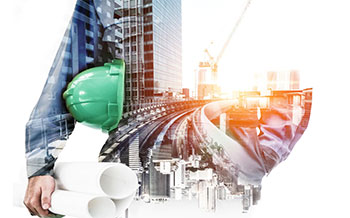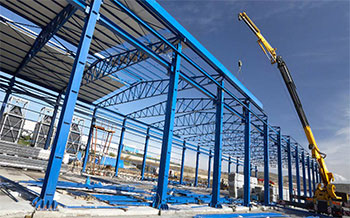
Stainless Steel Railing System

Stainless Steel Railing System
Reasons to Choose Stainless Steel Railing System
Stainless steel stands out as one of the most adaptable and long-lasting materials for any setting. Unlike other options, it resists corrosion exceptionally well, requires minimal upkeep, and can be easily customized through cutting and welding. Additionally, its sleek appearance complements a variety of materials, allowing you to create a distinctive look.
If you're exploring options for commercial Stainless Steel Railing System systems, here are five compelling reasons to choose stainless steel.
Strength
Stainless steel stands out as the strongest and most durable material for Stainless Steel Railing System. To illustrate, let's compare its tensile strength to that of aluminum. Tensile strength is the force applied per unit area, measured in pascals (Pa), with higher values indicating greater strength. Stainless steel boasts an ultimate tensile strength of 590 MPa, significantly surpassing aluminum's 300 MPa for the 6061-T6 grade. With a fatigue performance that is double that of aluminum, Stainless Steel Railing System promise extended years of safe and attractive use—far outlasting their aluminum counterparts.
Eco-Friendly
For those prioritizing sustainability in architectural designs, stainless steel is an excellent selection. Being 100% recyclable, it can be transformed back into high-quality steel materials without losing its integrity. Moreover, 92% of stainless steel utilized in architectural applications is repurposed and recycled, demonstrating its commitment to environmental responsibility without sacrificing performance or quality.
Affordability
Although the upfront cost of stainless steel may be higher, its long-term durability and minimal maintenance requirements more than justify the investment. Stainless Steel Railing System excel in harsh weather conditions, resisting crumbling, fracturing, or bending over time. Additionally, due to its strength, posts and handrails can be crafted thinner than those made from other materials—stainless steel posts can be 50% slimmer than their aluminum equivalents. Maintenance is a breeze; a regular wipe-down with a damp cloth is all that's needed to keep railings and posts looking pristine.
Aesthetics
Stainless Steel Railing Systems bring a sleek, modern look to contemporary designs. They resist damage and wear, ensuring that your aesthetic vision remains intact for years to come. Offering a multitude of design options, stainless steel can be tailored to suit any preference. Its minimalist style allows it to seamlessly integrate with various infill choices, such as glass, cable, panels, and bars.
Design Diversity
When it comes to selecting custom prefabricated Stainless Steel Railing System, you're essentially choosing a tailored Stainless Steel Railing System system that's assembled from pre-manufactured components according to your specified design. The beauty of customization lies in the designer's ability to select various elements to forge these unique Stainless Steel Railing System systems. Generally, these systems undergo rigorous testing and receive approval to comply with relevant building codes. However, since many of these prefabricated solutions are produced overseas, the delivery timeline may vary based on availability or whether components need to be procured directly from the original manufacturer. It's also worth noting that opting for prefab railings could lead to more on-site labor, which may affect the overall cost compared to custom-fabricated railings.
Installing Stainless Steel Handrails
The installation of Stainless Steel Railing System is crucial for creating a safe and welcoming building environment. Stainless Steel Railing System made from high-quality stainless steel not only offer durability and visual appeal but also provide exceptional resistance to corrosion, ensuring they last for years. Their robust design and user-friendly ergonomics guarantee a comfortable grip and enhanced stability for everyone, regardless of age or ability. Choosing to invest in Stainless Steel Railing System is a smart decision that both elevates safety and enhances the aesthetic of any space. Follow this guide for a successful installation of Stainless Steel Railing System.
Materials Needed
To install a Stainless Steel Railing System, gather a range of materials: a Stainless Steel Railing System, brackets, screws, anchors appropriate for your wall type, and a drill. Additionally, make sure to have a measuring tape, a level, and a pencil for marking. Using high-quality materials is essential for ensuring the durability and stability of your handrail.
Preparation
Start by measuring the area where the Stainless Steel Railing System will be installed. Clearly mark the wall to indicate the bracket placement, making sure the Stainless Steel Railing System will be positioned at a height and angle suited for all users. Before beginning the installation, clean the area thoroughly to eliminate any obstructions.
Verify the Measurements
Double-check your measurements to confirm the Stainless Steel Railing System is the correct height and length. Use a level to ensure the Stainless Steel Railing System is aligned properly. Accurate measurements and level alignment are key to achieving both visual appeal and functional stability.
Check Wall Stability
Drilling into walls can seem daunting, especially if you're unsure where to begin. Before you start, make sure the wall is sturdy enough to support the Stainless Steel Railing System weight and any pressure applied to it.
Study the Installation Manual
Take a moment to carefully review the installation manual included with your Stainless Steel Railing System kit. It may provide specific instructions and important precautions that pertain specifically to your product.
Organize Your Tools
To ensure a smooth installation process and avoid delays, it's essential to keep your tools tidy and within easy reach. Take some time the day before you start to arrange your tools in the most accessible spots in your tool belt or toolbox.
Installation Steps
Installing a Stainless Steel Railing System involves a few key steps. Start by marking the wall where the brackets will go. Next, drill the holes and insert screws and anchors to secure the brackets firmly. After that, position the rails onto the brackets and attach them with screws, making sure they're stable and can support weight. Regularly use a level during the installation to keep the Stainless Steel Railing System straight and aligned. Once the Stainless Steel Railing System is up, check its stability and make any necessary adjustments. While it may seem complicated at first, with the right tools and planning, you can get it done.
Final Inspection
After the installation, it’s important to inspect the Stainless Steel Railing System to ensure its safety. This check is essential for confirming that the Stainless Steel Railing System is both secure and functional. Focus not just on how it looks but also on preventing any potential accidents.
Take a moment to check if the Stainless Steel Railing System feels wobbly or moves when pressure is applied. If you notice any issues, revisit the installation process before finalizing it. Ensure there are no sharp edges or exposed screws. The significance of this post-installation inspection cannot be overstated—it's vital for the safety of anyone using the Stainless Steel Railing System. This step allows you to spot and fix potential problems, ensuring the Stainless Steel Railing System performs its job effectively.
Inspection Tips for Stainless Steel Handrails
To ensure the safety and security of your Stainless Steel Railing System, take a moment to check the following aspects:
Stability
Make sure your Stainless Steel Railing System are solid and don’t wobble when you apply pressure. If you notice any movement, revisit the installation process and tighten any loose screws or fittings. This will ensure that the Stainless Steel Railing System are securely attached to the wall brackets.
Alignment
Utilize a level to confirm that your Stainless Steel Railing System is perfectly horizontal. Even a slight tilt can detract from its appearance and may make it uncomfortable to use.
Finish Quality
Inspect the Stainless Steel Railing System for any damage, such as scratches or dents. Any flaws can diminish the overall look and functionality of the Stainless Steel Railing System.
Protrusions
Ensure there are no sharp edges or protruding screws. All components, including the brackets, should be flat and smooth to prevent any accidental injuries.
Height
Verify that the height of the Stainless Steel Railing System is appropriate for all users. The standard height ranges between 34 and 38 inches from the floor.
Regular inspections and maintenance are vital for prolonging the life of your Stainless Steel Railing System. Catching and addressing potential issues early will help you avoid future complications.
Maintenance Tips for Stainless Steel Railing System
Taking proper care of your Stainless Steel Railing System is crucial to enhance their longevity, aesthetic appeal, and safety. Consistent maintenance not only ensures sturdiness but also prevents issues like corrosion. Here are some essential maintenance tips:
Regular Cleaning
Frequently clean your Stainless Steel Railing System to keep them shining and free from dirt and grime buildup. For routine cleaning, use a soft cloth with warm soapy water. For tougher stains, you can opt for specialized stainless steel cleaners available in the market.
Avoid Abrasive Materials
Steer clear of steel wool or any abrasive materials when cleaning your Stainless Steel Railing System. These can scratch the surface and damage the protective coating, which may lead to rust over time.
Inspect Regularly
Make a habit of inspecting your Stainless Steel Railing System. Look out for loose brackets or screws and ensure the Stainless Steel Railing System remains secure. If you find any issues, address them promptly to avoid further complications.
Treat Rust Spots Early
If you come across any rust spots, treat them as soon as possible. A mixture of water and baking soda can be effective for removing rust. However, for significant rust issues, consider consulting a metal Stainless Steel Railing System specialist for cleaning.
Seal Your Stainless Steel Railing System
Think about applying a protective sealant to your Stainless Steel Railing System. This sealant provides an additional layer of protection against environmental factors, which helps prevent rust and extends the lifespan of your Stainless Steel Railing System.
Choosing the Right Grade of Stainless Steel for Handrailing
When it comes to Stainless Steel Railing System, stainless steel is a top choice due to its blend of versatility, durability, and striking appearance. Its low maintenance needs and longevity make it a more attractive option than traditional materials, making it popular in both residential and commercial settings. However, selecting the right grade can be a bit overwhelming given the variety of options available. So, which grade should you consider for your Stainless Steel Railing System project? Let’s explore a couple of key grades.
Grade 304 Stainless Steel
Grade 304 stainless steel is the most widely used grade for handrailing. Often referred to as “18-8” stainless steel, it’s composed of 18% chromium and 8% nickel. These elements contribute to its remarkable resistance to corrosion and rust, making it a reliable choice. Additionally, it's malleable and easy to weld, which makes it suitable for various indoor and outdoor applications.
Grade 316 Stainless Steel
Known as marine-grade stainless steel, Grade 316 contains 16-18% chromium, 10-14% nickel, and 2-3% molybdenum. This added molybdenum boosts its corrosion resistance, especially in challenging environments, such as coastal areas or places exposed to high levels of salt and other harsh chemicals. If your Stainless Steel Railing System will be near salt water, Grade 316 is an excellent option to consider.
WAREHOUSE STEEL STRUCTURAL CONTRACTORS
Warehouse Shed Cost - Estimation Per Sq ft

Why To Choose Warehouse Builders?
Learn More
Essential Blogs for the Construction Industry
Learn More
Pre-Engineered Building Future of Construction Industry
Learn MoreOur Construction Works
When you choose us, you'll feel the benefit of 20 years' experience of industrial construction services. With our capacity to meet the mass requests, we have had the option to take special care of the requirements of our significant clients.
Warehouse Construction
The most common material used for warehouses is steel, creating a pipe system that supports the outside cladding & roof.

Industrial Construction
Industrial construction deals with factories, power plants, warehouses, and other highly specialized facilities.

PEB
Manufacturers
Pre-Engineered Building is the fundamental based design which directly manufactured by the PEB Manufacturers association.

PEB
Contractors
PEB is the ideal choice for any kind of construction needs whether it is for the individual reason/for the business reason.

Pre-Engineering Building
Pre-Engineering Building are broadly utilized in the residential just as industrial sector for its unparalleled attributes.

PEB Steel
Building Construction
Steel is heat proof, meaning it will not totally stop a fire. Steel is one of the most durable materials for construction.

